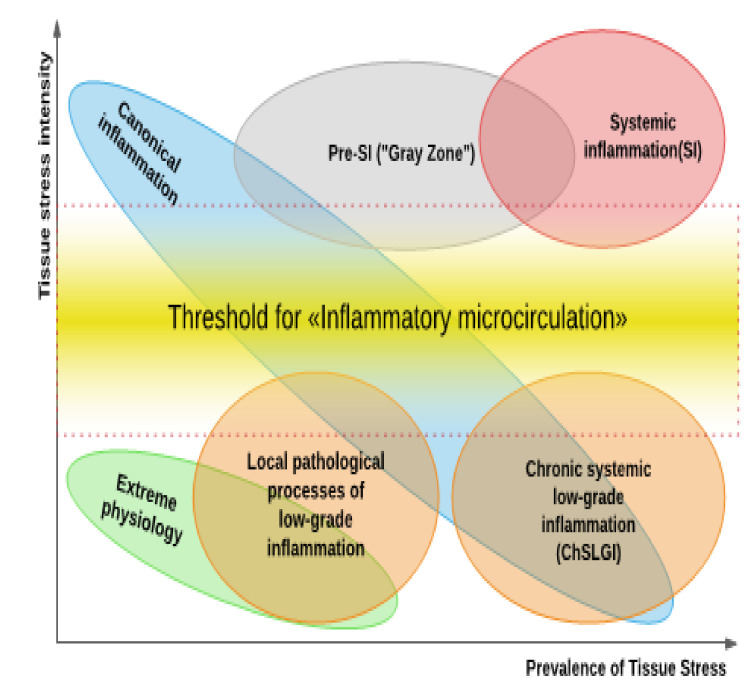Figure 2.
Tissue stress and general pathological processes. Three “large” general pathological processes can be distinguished based on the ratio of intensity (the ordinate in the Figure) to prevalence (the abscissa) of damaging factors initiating a “response” in the form of tissue pro-inflammatory stress—a common pathogenetic basis of all pathological processes (classical inflammation, SI, and ChSLGI). The “inflammatory microcirculation”—a reaction of microvessels that causes a clinically significant exudative reaction and enormous migration of leukocytes into a damaged area with the establishment of the inflammation focus—is the key differentiating phenomenon for their separation. (1) The existence of an inflammation focus (upper-left corner in Figure 2), as well as, in some cases, the systemic manifestations of tissue stress at a subthreshold level for “inflammatory microcirculation”, characterizes classic inflammation. In most cases, these systemic reactions are protective and targeted at providing resource support for the inflammation’s focal point (immune response, the acute-phase response of the liver, forced leuko-cytopoiesis, neuroendocrine stress, and mobilization of metabolic reserves). (2) Systemic inflammation (SI) is characterized by shockogenic systemic “inflammatory microcirculation” and the presence of a transitional “gray” zone, in which it is impossible to prove or refute the presence of SI in situations of the “pushing” variant development (upper-right corner of the Figure). (3) Parainflammation (low-intensity inflammation): can be local (see the figure in the lower-left corner of Figure 1) or can spread throughout the body (see ChSLGI) (lower-right corner of Figure 1). The signs of endotheliosis and, in certain circumstances, latent microcirculatory disorders can be disclosed within these types of tissue pro-inflammatory stress.

